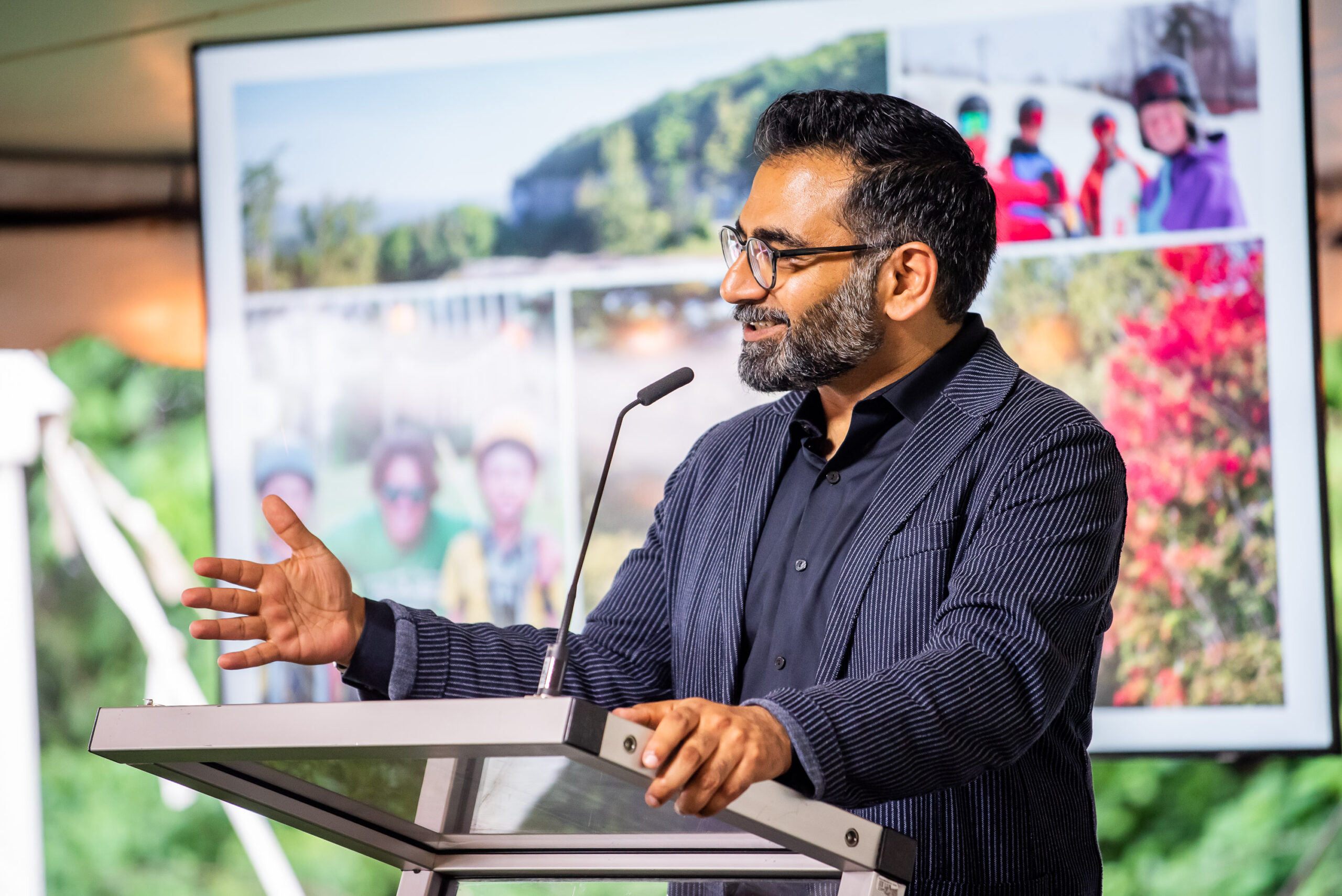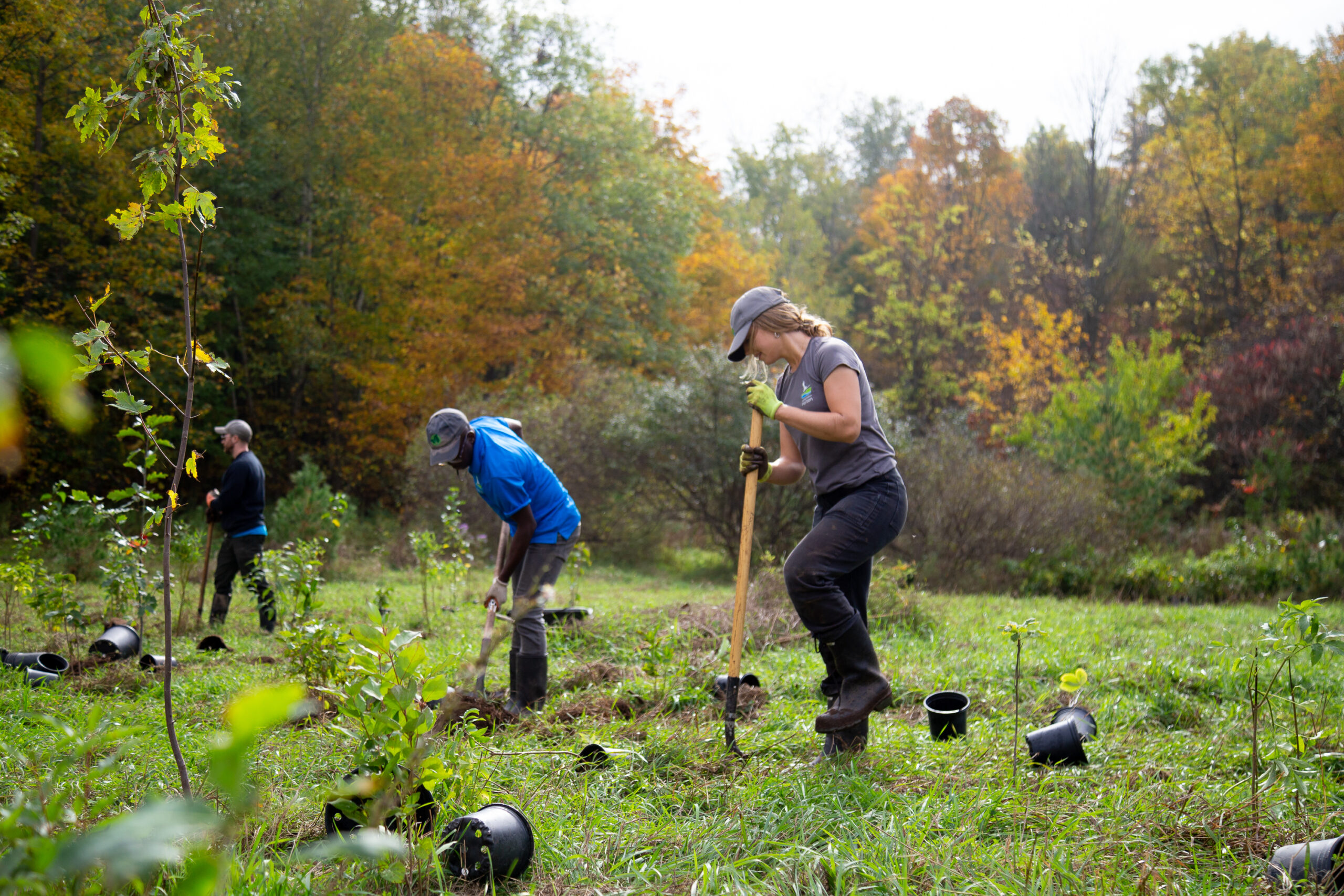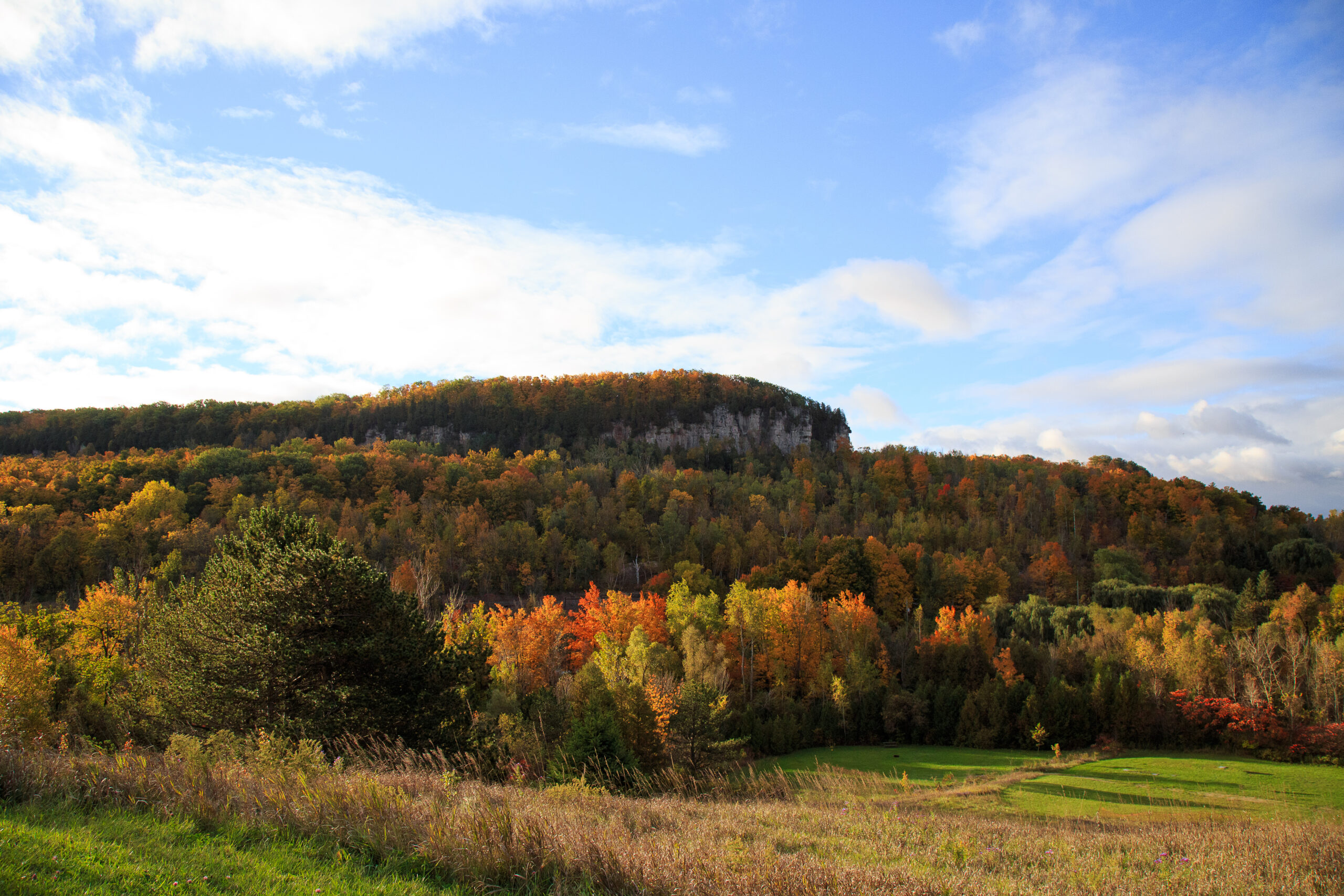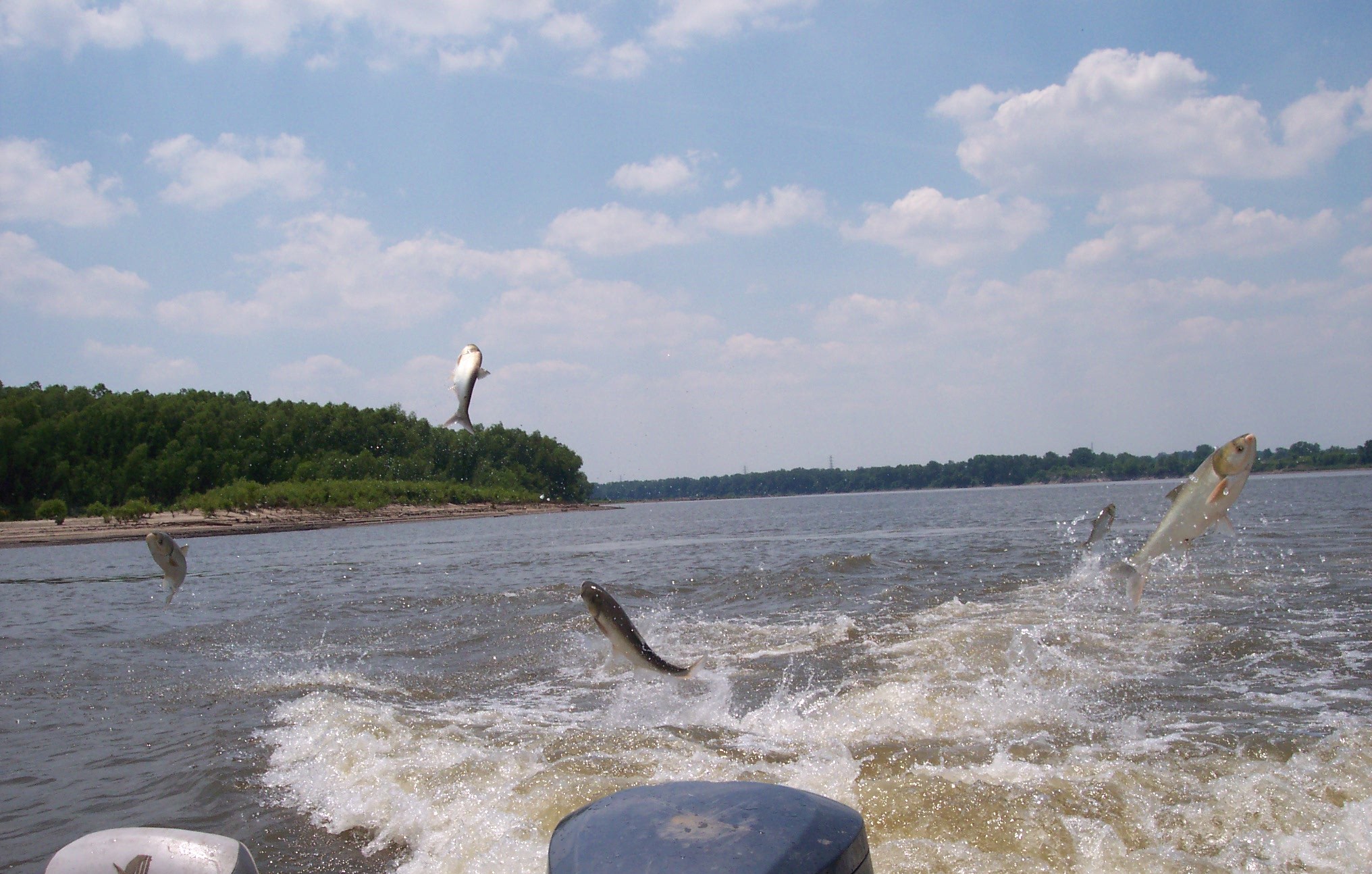
By Fatima Syed
The Great Lakes News Collaborative includes Bridge Michigan; Circle of Blue; Great Lakes Now at Detroit Public Television; Michigan Public, Michigan’s NPR News Leader; and who work together to bring audiences news and information about the impact of climate change, pollution, and aging infrastructure on the Great Lakes and drinking water. This independent journalism is supported by the Charles Stewart Mott Foundation. Find all the work HERE.
Hassaan Basit began working for conservation authorities in 2004. By that time, the unique Ontario entities already had a storied history mitigating the impacts of climate change, ever since they were established in 1946 in response to severe flooding across the province.
“It was this great moment,” Basit said. “You’re looking at the post-World War Two boom when there are opportunities across North America, and here’s Ontario that can’t deal with a flooding issue. It’s getting in the way of sustained growth they knew was coming.”
Back then, it was “a big deal” for the province — led by a Progressive Conservative government — and all its municipalities to come together and create a solution, especially one that wasn’t based on human-made geographical boundaries, but on natural boundaries: watersheds. Basit calls the authorities “one of Ontario’s best grassroots-led innovations,” which are widely credited with helping to reduce the impacts of floods and other natural hazards.
Fast forward 80 years and Ontario is again grappling with intense growth, balancing the building of much-needed housing with minimizing flood risk and protecting land and wildlife.
Basit is the outgoing CEO of Conservation Halton, which protects sprawling, natural spaces that knit together the rapidly growing communities of Burlington, Milton, Oakville and Halton Hills. He spent two decades with the organization, moving up the ranks to take the top role in 2017.
Since then, he has become a pivotal figure in the standoff between conservation authorities and the current Progressive Conservative government, which has played out for the last five years. After the first round of cuts, he marched into then-environment minister Jeff Yurek’s office to demand an explanation, and ended up leading a working group made up of the authorities, municipalities, developers and the province that tried to chart a less combative and more collaborative way forward.
As Ontario kept reducing the authorities’ powers — transferring oversight of their work from the Environment Ministry to Natural Resources — tensions continued, and Basit kept fighting, both on the frontlines and in back rooms. Along the way, he has engaged directly with Premier Doug Ford, even while the minister of natural resources continued to deliver blows.
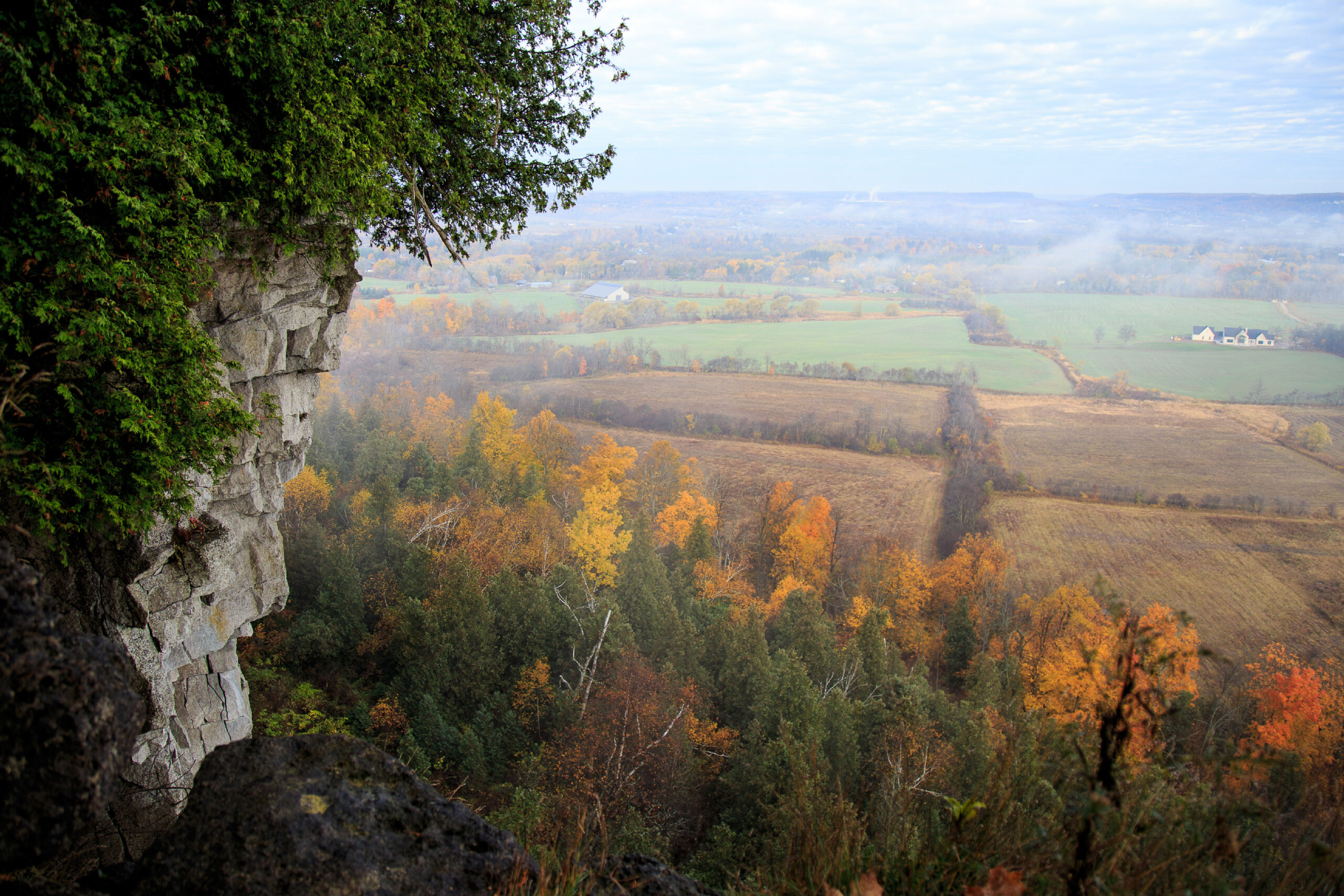
For 20 years, Hassaan Basit has worked with Conservation Halton, which protects the natural spaces that knit together Burlington, Milton, Oakville and Halton Hills. Photo: Conservation Halton
The latest round of changes take effect April 1, when Natural Resources Minister Graydon Smith will gain the power to overrule conservation authority decisions and any conditions they place on building permits. Developers will be able to ask the minister to review permit denials and challenge the studies used to justify them. It will be easier to build docks and other small structures, even in places prone to floods, and the distance between development and sensitive shorelines and wetlands will be reduced.
As Basit takes on a new role as city manager for Burlington, he sat down with The Narwhal to reflect on the relationship between conservation authorities and the province, and why Ontario needs the authorities to truly make it a place to grow.
This interview has been edited for length and clarity.
You have been working with conservation authorities for two decades. What do you think people still don’t fully understand about their role?
Conservation authorities have some of the brightest minds working within them: people who understand flooding, water, weather patterns, drainage systems and hydrology … We were created as an environmental solution that is closely linked to economic and social gains or losses. The provincial government of the day gave us a toolkit, realizing that many things needed to be part of this solution, not just a hammer and a set of nails.
You don’t let people build in floodplains where they’re going to lose their life and their property — that’s a no-brainer. We had all these tools to make sure we didn’t put concrete everywhere. Back then, in the 1960s and 1970s, there were tangible solutions that people could see: dams were being built, forests were being replanted, water quality and creeks were visibly becoming better. And we were growing economically.
But when man-made impacts started accelerating, the job became tougher. Everybody started talking about climate change [in the 1990s] and it immediately got politicized. Guess who’s in the middle of it all?
Conservation authorities.
We were given a lot more to do, which we were capable of. But then [former Ontario Progressive Conservative premier] Mike Harris decided to cut our funding overnight by 80 per cent or something like that. What the province got wrong over subsequent decades, and continues to get wrong occasionally, is that you can’t just increase responsibilities, reduce funding and then walk away.
They cut the funding and abandoned the conservation authority child at the door of municipalities. They rang the door and ran off into the night. What do I mean by that? They stopped modernizing our policies to address the changing environmental and social landscape. And that’s when things started to fall apart. … So what we’ve ended up with today are archaic policies from the province.


